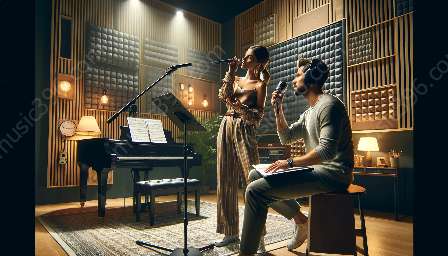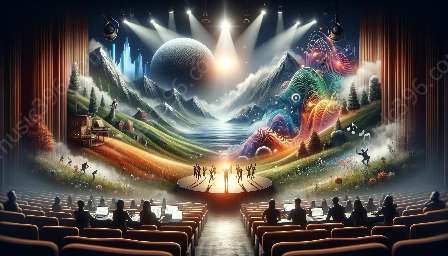Studio recordings require various vocal styles to convey different emotions and artistic expressions. Understanding the different vocal styles and their compatibility with studio singing techniques, vocal production, and show tunes is essential for producing high-quality recordings.
1. Jazz Vocal Style
The jazz vocal style is characterized by improvisation, rhythmic complexity, and unique phrasing. This style is suitable for studio recordings as it allows singers to showcase their vocal agility and individual expressiveness. It is essential to use studio singing techniques such as breath control, dynamics, and phrasing to enhance the authenticity of jazz vocals in recordings. Vocal production in jazz recordings involves capturing nuances and subtleties in the performance to create an intimate and immersive experience for the listeners.
2. Pop Vocal Style
Pop vocal style is known for its catchy melodies, rhythmic patterns, and contemporary sound. It requires precision in pitch, control, and expression to deliver impactful studio recordings. Studio singing techniques like vocal warm-ups, pitch correction, and vocal layering play a vital role in achieving the desired pop vocal sound. Vocal production in pop music involves utilizing studio effects such as reverb, compression, and equalization to enhance vocal clarity and presence in recordings.
3. Classical Vocal Style
Classical vocal style demands technical proficiency, extensive vocal range, and impeccable diction. Studio recordings of classical vocal performances require meticulous attention to detail in vocal production. Techniques such as microphone placement, acoustics, and post-production editing are crucial for capturing the richness and resonance of classical vocals. Understanding vocal techniques like vibrato control, breath support, and vowel shaping is essential for delivering authentic classical vocal recordings.
4. R&B Vocal Style
Rhythm and Blues (R&B) vocal style emphasizes soulful delivery, emotive phrasing, and vocal improvisation. Studio recordings of R&B vocals benefit from vocal production techniques that emphasize warmth, intimacy, and authenticity. Utilizing studio effects like delay, modulation, and vocal harmonies enhances the depth and emotionality of R&B vocal recordings. Studio singing techniques such as vocal runs, melisma, and vocal placement contribute to the expressive quality of R&B vocals in recordings.
5. Musical Theater Vocal Style
Musical theater vocal style demands versatility, storytelling through song, and character portrayal. Studio recordings of musical theater vocals require attention to vocal production techniques that capture the theatricality and emotional dynamics of the performances. Techniques like vocal projection, articulation, and microphone dynamics are crucial for translating the dramatic nuances of musical theater vocals into recordings. Studio singing techniques such as belting, head voice control, and vocal expression are essential for delivering compelling and expressive vocal performances for show tunes.
Understanding the nuances of different vocal styles and their compatibility with studio singing techniques and vocal production is central to creating impactful studio recordings. By mastering the technical and artistic aspects of vocal performance and production, singers and recording professionals can elevate the quality and resonance of studio-recorded vocals across various music genres.






























